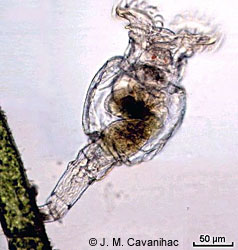Tuesday, March 31, 2009
Introduction to Animals Packet Vocab
Monday, March 30, 2009
Invertebrate phylums and their characteristics
So, as Campbell states, the "Kingdom Animalia encompasses 1.3 million known species, and estimates of total species range far higher".
Invertebrates - animals without a backbone - account for 95% of known animal species and all but one of the roughyl 35 animal phyla that have been described.
- More than a million extant species of animals are known, and at least as many more will probably be identified by future biologists.
- Invertebrates inhabit nearly all environments on Earth, from the scalding water of deep-sea hydrothermal vents to the rocky, frozen ground of Antarctica.
Lophotrochozoan is defined as: a member of a group of animals phyla identified as a clade by molecular evidence. Lophotrochozoans include organisms characterized by lophophores or trochophore larvae. ('Lophophores' are feeding organs.)
Within the lophotrochozoans are the phyla:
Platyhelminthes (20,000 species)

2. Rotifera (1,800 species)

Then there is the taxon ECDYSOZOA, which is defined as a member of a group of animal phyla identified as a clade by molecular evidence. (Many ecdysozoans are molting animals.) The ecdysozoa taxon includes the phyla Loricidera (10 species), Priapula (16 species), Tardigrages (800 species), Onychophora (110 species), Nematoda (25,000 species), and Arthropoda (1,000,000 species).
The taxon deuterostomia is a superphylum of animals. They are distinguished by their embryonic development; in deuterostomes, the first opening (the blastopore) becomes the anus, while inprotostomes it becomes the mouth. This includes the phyla Hemichordata (85 species), Echinodermata (7,000 species), and Chordata (52,000 species).
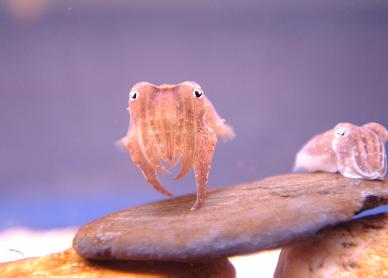
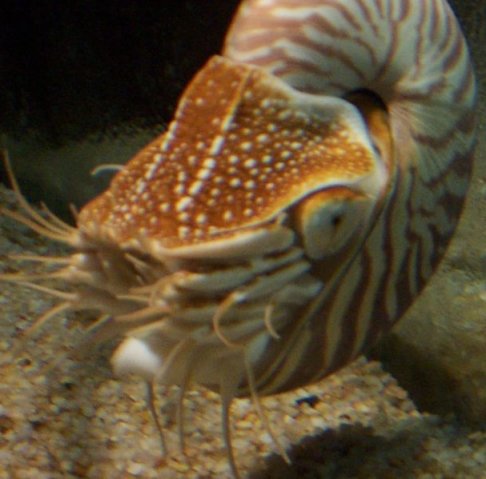
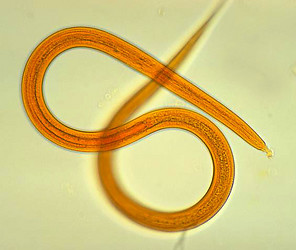




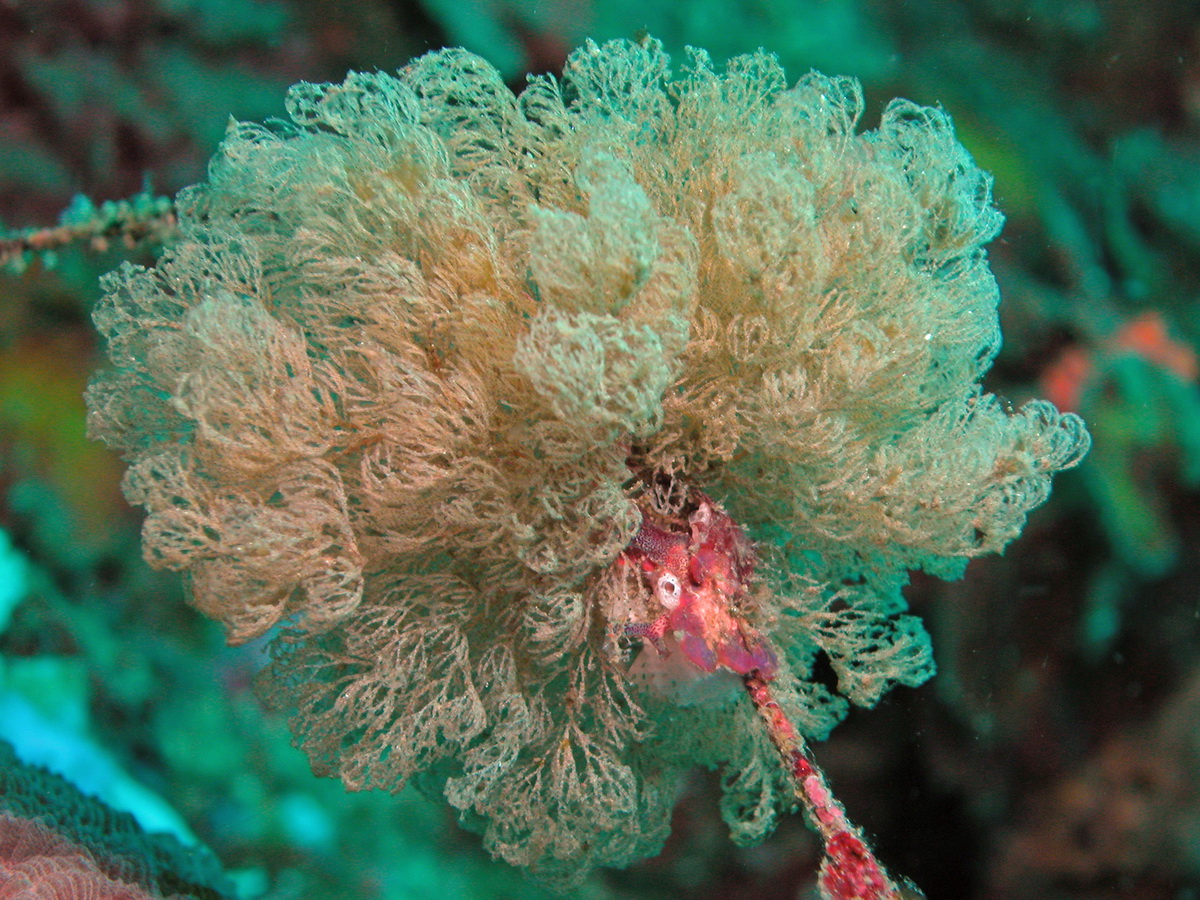

1. Which phylum is characterized by animals that have a segmented body?
a. Cnidaria
b. Platyhelminthes
3. Silicea
4. Arthropoda
5. Mollusca
2. Cnidarians are _(a)_ that often use tentacles arranged in a ring around their mouth to capture prey and push the food into their gastrovascular cavity.
a. omnivores
b. carnivores
c. herbivores
3. Which of the following characteristics is probably most responsible for the great diversification of insects on land?
a. exoskeleton
b. bilateral symmetry
c. segmentation
d. antennae
e. eyes
Answers: 1 d, 2b, 3a.
Friday, March 27, 2009
Chapter 42 (extra notes)
Also I found this awesome video that describes all of the notes we took on 42. It doesn't get into great detail but it gives a great outline on the notes.
http://www.youtube.com/watch?v=4isM9FUBXxQ
Few extra notes on Circulation and Gas Exchange:
All animal cells go through cellular respiration, which is the breakdown of energy into a usable form to provide power to perform cellular functions. Oxygen is required for that of cellular respiration, resulting in carbon dioxide as a waste product. Animals, therefore, use an organ system in which the exchange of oxygen and carbon dioxide can take place with the external environment, as well as a system to transport these gases throughout the body. The respiratory and circulatory systems perform these two intertwined tasks. The respiratory system exchanges gases with the environment, while the circulatory system transfers those gases throughout the body.
All gas exchange requires a moist medium for the gases to move from surface to surface. This requirement poses no problem for animals living only in aquatic environments, as gills and skin absorb gases directly from the surrounding water. However, as animals evolved to live on land, they developed tracheae and lungs that contained moist surfaces for this purpose. The following table describes each respiratory structure in more detail.
| Skin | In a process known as cutaneous respiration, the skin, which is moist and well-vascularized, exchanges gas directly with the environment through its blood vessels. |
|
|
|
| Amphibians, such as frogs and salamanders, as well as some marine snakes, respire through their skin. This usually takes place in conjunction with respiration through lungs. |
|
|
|
|
|
|
|
|
|
|
|
|
|
|
|
|
|
|
|
|
|
|
|
|
|
|
|
|
|
|
|
|
|
|
|
|
|
|
|
|
|
|
|
|
|
|
|
|
|
|
|
|
| Gills | Gills are extensions of internal tissues that project into the water, where gases can diffuse. Gills are heavily branched, providing a large amount of surface area for gas to exchange, making them more efficient than skin. Gills can be external (not enclosed in the body), which requires constant movement to ensure contact with fresh water, or internal, enclosed within branchial chambers where water is pulled in and out, creating currents over the gill tissue. |
|
|
|
| External gills are found on the larvae of many fish and amphibians, as well as adult amphibians such as the axolotl. Internal gills are found in arthropods such as crustaceans and spiders, mollusks, echinoderms many adult amphibians, and fish. |
|
|
|
|
|
|
|
|
|
|
|
|
|
|
|
|
| Tracheae | Tracheae are air-filled tubular passages that form an extensive network in the body. These passages connect the body surface with all internal structures. Oxygen is passed straight from the tracheae into cells. Insects rely solely on this respiratory system, rather than a circulatory system, to transfer oxygen throughout their bodies. Insects have external structures on their exoskeleton called spiracles that open and close to prevent water loss during respiration. |
|
|
|
| Tracheae are the respiratory system of most terrestrial arthropods, including all insects, some spiders, mites and ticks, millipedes, and centipedes. |
|
|
|
|
|
|
|
|
|
|
|
|
|
|
|
|
| Lungs | Air moves into and out of the body through branched tubular passageways, which moisten the air in the process. Eventually moist air reaches a thin, wet membrane that permits exchange of gases within the lungs, where it can be circulated throughout the body. |
|
|
|
| Lungs are found in some arthropods, as well as all amphibians, reptiles, birds, and mammals. |
|
|
|
|
1. As blood returns to the human heart from systemic capillaries, the blood will first enter the:
A. left atrium
B. right atrium
C. left ventricle
D. right ventricle
E. aorta
2. Which of the following are the only vertebrates in which blood flows directly from respiratory organs without first returning to the heart?
A. Amphibians
B. Birds
C. Fishes
D. Mammals
E. Reptiles
3. Tracheal systems with gas exchange are found in:
A. crustaceans
B. earthworms
C. insects
D. jellyfish
E. vertebrates
Answers: 1: B,2:C,3:C.
Wednesday, March 18, 2009
The complete cycle of contraction and relaxation of the heart is called the cardiac cycle. The contraction phase is called systole, and the relaxation phase is called diastole.
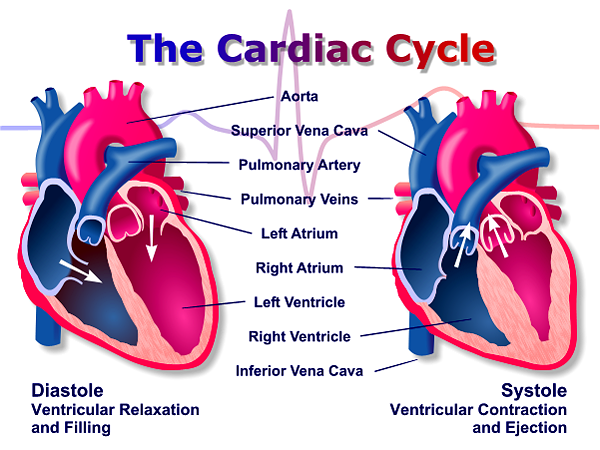 Heart rate is the rate of contraction per minute, and the stroke volume is the amount of blood pumped by the left ventricle during each contracion.
Heart rate is the rate of contraction per minute, and the stroke volume is the amount of blood pumped by the left ventricle during each contracion.There are four heart valves and two atrioventricular (AV) valves between each atrium and ventricle, which prevent the back flow of blood into the atria; there are also two semiulnar valves-one located at the entrance to pulmonary artery and the second at the entrance to the aorta.
 Regulation of the Heartbeat
Regulation of the HeartbeatThe sinoatrial (SA) node is the pacemaker of the heart. It is located in the upper wall of the right atrium. It stes the rate at which cardiac muscle cells contract.
 The AV or atrioventrical node, located in the lower wall of the right atrium, delays the impulses from the SA node to allow the atria to completely empty before the ventricles contract.
The AV or atrioventrical node, located in the lower wall of the right atrium, delays the impulses from the SA node to allow the atria to completely empty before the ventricles contract.The Lymphatic System and Blood
The lymphatic system is responsible for returning lost fluid and proteins from the blood back into the blood. Lymph is the lost fluid and proteins carried in the lymphatic system. Along a lymph vessesl are lymph nodes that filter lymph and attack viruses and bacteria, playing and important role in immunity.

Blood is actually a connective tissue made up of many kinds of cells in a liquid matrix called plasma. Plasma is mosly water, but it also contains ions, electrolytes, and plasma proteins. It also carries nutrients. Metabolic wastes gases and hormones.

In addition, blood plasma maintains the blood osmotic pressure and carries:
1. red blood cells (RBC) (erythrocytes)-which transport oxygen vea hemoglobin (an
iron containing protein), transport of water soluble lipids
 2. white blood cells (WBC) (leukocytees)- which are part of the immune system
2. white blood cells (WBC) (leukocytees)- which are part of the immune system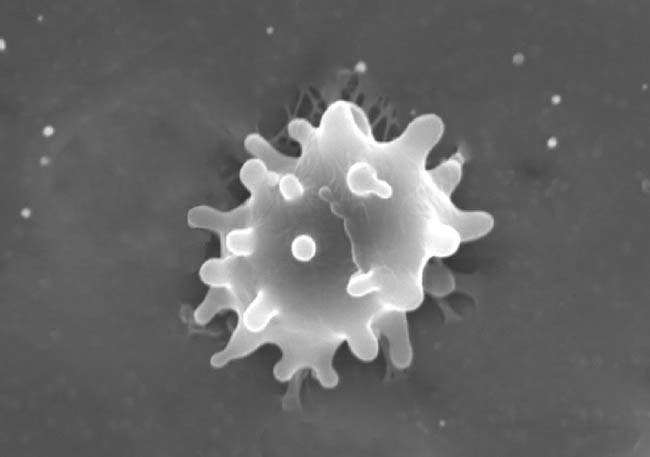 3. platelets- are fragments of cells that are responsible for blood clotting and immune reponses
3. platelets- are fragments of cells that are responsible for blood clotting and immune reponses Blood contains a soluble plasma protein called fibrinogen, which forms clots when it is converted to its active form, fibrin
Blood contains a soluble plasma protein called fibrinogen, which forms clots when it is converted to its active form, fibrinBlood clotting involves:
-the activation of prothrombin and thrombin
-adhesion of platelets
-clottin factor releases by clumped platelets
 Questions
Questions1. Heart rate is
a. the amount of blood pumped by the left ventricle during contraction
b. the contraction phase also called systole
c. the rate of contraction per minute
d. the relaxation pase also called diastole
2. Plasma is
a. mostly water
b. carrie white blood cells
c. carries red blood cells
d. carries platelets
e. All of the above
3. Fibrinogen is
a. protein involved in coagulation
b. network of capillaries in a tissue or organ
c. liquid matrix of blood in which the cells are suspended
d. iron-containing protein in red blood cells
Answers:
1.c
2. e
3. d
Tuesday, March 17, 2009
Chapter 41 continued../Chapter 42

-The large intestine, also called the colon, is connected to the small intestine by a sphincter. The point of the connection is the site of the cecum, a small pouch with an extension called the appendix.
-The main function of the large intestine is to compact waste and recover water from it that can be returned to the body. The wastes become more solid as they travel along and form feces.
-At the end of the colon is the rectum, where feces are stored until they are eliminated.
-Evolutionary adaptions of vertebrate digestive systems correlate with diet.
-A mammal's dentition is generally correlated with its diet. In particular, mammals have specialized dentition that best enables them to ingest their food.
-Herbivores generally have longer alimentary canals. carnivores, reflecting the longer time needed to digest vegetation. Much of the chemical energy in herbivore diets comes from the cellulose of plant cell walls Many vertebrates (as well as termites) house large populations of symbiotic bacteria and protists whose enzymes actually digest the cellulose.
-In open circulatory systems, blood bathes the organs directly. The blood and lymph combined are called hemolymph, and a heart pumps hemolymph into cavities called sinuses.
-In closed circulatory systems, blood is contained within vessels and pumped around the body; the blood is separated from the interstitial fluid.

-Humans have a closed circulatory system called the cardiovascular system. The heart has atria (chambers that receive blood returning to the heart) and ventricles (chambers that pump blood out of the heart).
-The main types of blood vessels in humans are the arteries, veins, and capillaries. Arteries carry blood away from the heart and branch into smaller arterioles. Then capillaries network to form capillary beds. These capillary beds converge into venules, which converge into veins, which carry the blood back to the heart.
-Fluid flows into capillary bed at the upstream end near an arteiole and out of a capillary at the downstream near a venule.
-Velocity of blood flow is lowest in the capillaries.

-Here are the steps of double circulation in mammals:
1. The right ventricle pumps blood to the lungs through the pulmonary arteries.
2.The blood floes through capillary beds in the lungs and picks up oxygen and relases CO2.
3. The blood returns to the left atrium of the heart via pulmonary veins.
4. Then it continues to the left ventricle.
5. Then it leaves the heart via the aorta, which sends bloos to the arteries throught the body.
6. The blood enters the capillary beds in the neck, head, and arms.
7. The blood enters capillary beds in the abdomen and legs, giving up oxygen and picking up CO2 from cell respiration.
8. The capillaries form the venules, and the blood from the neck, head and arms travels back to the veins and back to the right atrium via the anterior vena cava.
9. Blood from the legs and trunk travels through the posterior vena cava back to the right atrium.
*KNOW THIS FROM ANY STARTING POINT!*
a) arteries
b) veins
c) capillaries
2. Which type of blood vessels carries blood away from the heart?
a) veins
b) arteries
c) capillaries
d) all of the above
3. Which is the organ that pumps blood throughout the human body?
a) the lungs
b) the heart
c) the kidneys
d) blood vessels
2. a *tip: to help you remember that just think AA arteries-away*
3. b. i think you should know that by now.
Mnemonic Study List for AP Bio Review
UNIT I – Chemistry
FOR ORGANIC MOLECULES
1) Clean Later Party Now
Carbohydrates
Lipids
Proteins
Nucleic Acids
2) Mono-Zach-and Cody ride in a Car (monosacharides make up carbohydrates)
Lipids-- I tell them to think of A. Jole and what are her lips filled with? fat--fatty acids
Proteins-- Proteams are Mean, also when you eat ribs you get protein (ribosomes make proteins)
FOR SOLUTIONS:
I tell my kids that I'm a guy playing a lute and I'm getting sucked into the vent. Solute into solvent
FOR OXIDATION AND REDUCTION:
1) LEO (the lion) says GER
LEO- loss of electrons is oxidation
GER- gain of electrons is reduction
2) OIL RIG
Oxidation is loss, reduction is gain
FOR CATIONS AND ANIONS:
1) Cations are pawsitive, anion stands for "a negative ion".
2)cation = notice the positive sign in the middle of the word.
anion = notice that the "an" sounds like the "n" in negative.
UNIT II – Cells
FOR THE TAXA:
1) Kings Play Chess on Fiber Glass Stools
2) domain, kingdom, phylum, class, order, family, genus, species=
Did King Phillip come over for good steak?
3) King Paul Ordered some Funky Green Spinach (Kingdom, Phylum, Order Family Genus, Species)
4) Kinky People Cry Out For Good Sex.
5) "Kids playing catch on freeways get squished" - so now I pass this on to my students. I always tell them that I also learned it when I was their age.
Now, I just add "DUMB kids..." (for domain at the beginning!!).
FOR PHOTOSYNTHESIS AND CELLULAR RESPIRATION
1) N-A-D and F-A-D take H and e to the E-T-C to make A-T-P.
2) NADPH or NADH? THe P stands for photosynthesis (Ok, I know it really doesn't but the never mix the two up after this!)
FOR OSMOSIS:
1) In a hypOtonic solution, the cell will swell up like an "O"
2) When a cell is in a hypOtonic solution, it swells up like a balloon (O-shaped) and the cell cries out "OOOOOOHHHHHH!" as it is about to explode. when a cell is in a hypERRRRtonic solution, it shrivels and moans "ERRRRRR."
3) Hypo sounds like hippo; Hippo's are fat, and if they get too fat they will pop. I would silently repeat the phrase: Hypo, hippo, fat, pop, before answering any questions on the distinction between these two definitions.
4) Hypertonic solutions, have a high concentration of solutes, like sugar makes you hyper.
FOR CELL CYCLE
1) For mitosis, I made up a song in the shower one day to the tune of YMCA; the kids even get up and make their arms into P - M - A -T
YOUNG CELL/ WELL YOU HAVE TO GROW UP
UNTIL YOUR SA/ TO VOLUME RATIO’S TOO SMALL
and THEN YOU/ MUST DIVIDE OR YOU’LL DIE
SO YOU’LL UN-DER-GO MI-TO-SIS
G1/ S AND FINALLY G2
DOUBLING NUCLEUS/ AND THE CELL CONTENTS TOO
AND THEN YOU/ WILL BEGIN TO DIVIDE
SO YOU’LL UN-DER-GO MI-TO-SIS
HEY, HEY, HEY, HEY, HEY
OH YES A CELL MUST GO THROUGH
P M A T
OH YES A CELL MUST GO THROUGH
P M A T
PROPHASE AND MET-A-PHASE
AN-A-PHASE AND TEL-O-PHASE
2) Ralph - Ipmat
R - Replicate - Interphase
a - appear - Prophase
l - line up - Metaphase
p - pull apart - Anaphase
h - half and hide - Telophase & Cytokinesis
3) I'm Pretty Mean And Tough
4) Interphase, prophase, metaphase, anaphase, telophase, cytokinesis= I pray monthly at the church
5) Metaphase = chromosomes in the Middle
Anaphase = Apart
6) IPMAT- I Pee on the MAT
7) IPMAT - I punched MAT
(suggested by a student named MATT!)
8) IPMAT = I Poop More After Tacos
9) I Passed My Algebra Test
UNIT III – Genetics
1) PHenotype is what you'd see in a PHoto (when I start the unit, we're usually looking first at visible traits like rolling the tongue, skin color, etc, then get more complicated)
2) You can remember that your "phenotype" is your"physical appearance" because both start with "F".
FOR DNA
1) When writing the letters C and G both curved, so they match up
When writing the letters A and T only straight lines are used, so they match up
2) Cytosine, Uracil and Thymine are all PYrimidines, because you CUT a pie.
Pyrimidines are a single ring, just like a pie is drawn as a single circle
If you can remember CUT and pyrimidine, then the others (Adenine and Guanine) are purines and a double ring
2) GUANINE AND ADENINE ARE PURINES "GREEN APPLES ARE PURE"
thymine and cytosine PYRIMIDINES "TORTILLA CHIPS ARE SHAPED LIKE PYRAMIDS" (ALSO HAVE Y IN THEIR NAME LIKE PYRIMIDINE
3) how many rings does a purine have – 2 RINGS - think guanine and adenine have 2 "N" in their name
4) how many H bonds between C and G – 3 H-BONDS - think C is the third letter of alphabet
5) C - G = chips always goes with guacamole
A - T = at Taco Bell
6) If your kids know the show "24", Jack Bauer works for the CTU (Counter Terrorist Organization) or (cytosine, thymine, uracil). They protect the pyramids (pyrimidines)
7) Pure As Gold (The purines are Adenine and guanine).
FOR TRANSCRIPTION
1) Adenine matches with Uracil, when changing to RNA because, as I tell my students, DNA (adenine) is the boss and gets to tell mRNA to go out to the cytoplasm and deliver the messages..."Hey you, go deliver this to the ribosome" = "A U, go deliver this to the ribosome" (very New Yawk!)
2) What does the cell do with InTrons? puts them In the Trash
3) INtrons are "IN the way" and need to be removed
EXons are Expressed
4) INtrons are IN between the genes
FOR TRANSLATION
1) For ribosomes, the three sites are A (arrive) P (park) E (exit)
UNIT IV – Mechanisms of Evolution
FOR THE NAMES AND SEQUENCE OF THE GEOLOGICAL EONS AND PERIODS:
1) Happily Arguing, Pregnant Camels Often Sit Down Carefully.
Perhaps Their Joints Creak.
Possible Early Oiling Might Perhaps Prevent Rusting.
Hadean Archaean Proterozoic Cambrian Ordovician Silurian
Devonian Carboniferous
Permian Triassic Jurassic Cretaceous
Paleocene Eocene Oligocene Miocene Pliocene Pleistocene Recent
2) Can Olivia See Down My Pants Pocket?
The Janitor Can!
Try, Quickly!
Cambrian Ordovician Silurian Devonian Mississippian
Pennsylvanian Permian
Triassic Jurassic Cretaceous
Tertiary Quaternary
UNIT V – The evolutionary History of Biological Diversity
UNIT VI – Plant Form and Function
FOR XYLEM AND PHLOEM:
1)xy goes up high, phlo goes down low
2) Phloem. The ph sound like food, transports "food" not water
3) To remember Xylem and Phloem, we remember that xylem carries water, and that "X" and "W" are next to each other in the alphabet, and that Phloem carries Food (sounds phonetically the same)
4) You xyl'em on up,
and you phlo'em on down!
(repeat as you march/dance)
5) water "zips up the xylem" and food "flows down the phloem".
UNIT VII – Animal Form and Function
FOR HORMONES:
1) To remember the hormones of the anterior pituitary, we sing them to the "ABC" song:
ACTH, LH, FSH, GH, TSH, PROLACTIN.....and MSH (sang like "and many more" in the Happy birthday song)
2) Calcitonin versus Parathyroid hormone:
Calcitonin = deposits calcium IN the bones (students usually
associate calcium with bones, not blood)
PTH - Perhaps Trash the Hip (weakened bones = damaged hip)
3) When Na+ asks the axon if it is okay to enter (during the resting state), the cell says No Admittance.
When K+ asks the axon the same question, the cell says (o)K!
FOR CLASSIFICATION:
1) Properly Cleaned Cafeteria Plates Need Normal Routine Maintenance After All Eating Concludes
(Porifera, Cnidaria, Ctenophora, Platyhelminthes, Nemertea, Nematoda, Rotifera, Mollusca, Annelida, Arthropoda, Echinodermata, Chordata)-
FOR HUMAN SYSTEMS:
1) SLIC MEN R RED
Skeletal
Lymphatic
Integumentary
Circulatory
Muscular
Endocrine
Nervous
Respiratory
Reproductive
Excretory
Digestive
2) Every class tries eagerly to learn many stories. Clearly, no story actually ends purely and peacefully.
Ectoderm epidermis of skin, tooth enamel, lining of mouth, Sensory receptors in epidermis, cornea, lens of eye, nervous system, adrenal medulla, epithelial of pineal and pituitary glands.
3)Mothers naturally supply many meals of steak and iceberg lettuce, especially satisfying carrot and lentil soup, really special supper dishes like boiled cod and cabbage.
Mesoderm: Notocord, skeletal and muscular systems, Muscles of stomach and intestine layers, excretory system, circulatory and lymphatic systems, reproductive systems, skin’s dermis, lining of body cavities, and adrenal cortex.
FOR VERTEBRAE
1)7 - 12- 5
7 cervical, 12 thoracic, 5 lumbar
and then of course, it's 1 sacrum, 1 coccyx
2) For the regions of the back, we always did:
Cyanide
Tastes
Like
Sweet
Candy
3) Valves of the heart:
Try (Tricuspid)
Pulling (Pulmonary)
My (Mitral)
Aorta (Aortic)
UNIT IX – Ecology
LABS AND MISC
1) I decide the Independent variable
you collect Data for the Dependent variable
2) SI: Kangaroos Hop Down Mountains Drinking Chocolate Milk
OR: King Henry Died Because (basic) drinking chocolate milk [Mondays (micro)]
FEEL FREE TO ADD
Monday, March 16, 2009
Ch 41: Animal Nutrition Continued....
The small intestine is the longest (6m) section of the alimentary canal.

The beginning of the small intestine is the site of most of the hydrolysis of macromolecules, and the rest of the small intestine is responsible for the absorption of nutrients into the blood.
The first section of the small intestine is known as the duodenum.

In the duodenum, the acid chyme mixes with secretions from the pancreas (bicarbonate, which acts as a buffer against acid chyme), the liver (bile, which contains bile salts-detergents that aid in digestion and help stabilize fat emulsions), the gall bladder, and the intestinal wall itself.

* Gall Bladder has no digestive secretions.
Here is how particular macromolecules are broken down in the small intestine:
1. Carbohydrates- The breakdown of starch and glycogen begins with salivary amylase in the mouth. In the small intestine, pancreatic amylases break starch, glycogen, and small polysaccharides into disaccharides.

The breakdown of these disaccharides occurs at the wall of the intestinal epithelium, and then the monosaccharides are quickly absorbed (they directly enter the blood)
2. Proteins- Pepsin begins the breakdown of proteins in the stomach and in the small intestine, trypsin and chymotrypsin break polypeptides into smaller chains. Dipeptidases, carboxypeptidase, and aminopeptidase break apart into amino acids. Considered the last source of energy.

3. Nucleic Acids- The breakdown of nucleic acids is similar to that of proteins. In the small intestine, nucleases break then down into nucleotides, nitrogenous bases, sugars, and phosphate groups.

4. Fats- Digestion of fats starts in the small intestine. Bile salts coat the fat droplets and keep then from coalescing (in emulsification), and lipase hydrolyzes them. Most absorbed fat first enters the lymphatic system.

Most absorbtion of nutrients occurs in the small intestine, and the epithelial lining of the small intestine has folds called villi, which in turn bear projections called microvilli-both of which radically increase the surface area available for absorption.

In each villus is a set of tiny blood vessels called capillaries and a lymph vessel called a lacteal.
Monosaccharides, such as glucose, cross via passive diffusion, whereas amino acids and dipeptides are pumped across in active transport.
The lacteal will absorb small fatty acids.
The capillaries and veins that drain the nutrients away from the villi all join the hepatic portal vessel, which brings them to the liver. The liver metabolizes the organic molecules in various ways.

Some hormones involved in digestion are gastrin, which stimulates the secretion of gastric juice; and enterogastrones, such as secretin and cholescystolcinin (CCK), that are secreted by the walls of the duodenum and that prompts the digestion of various macromolecules.

Multiple Choice:
1. How long is the small intestine?
a. 15 m
b. 8 m
c. 6 m
d. 4 m
2. In the duodenum, the acid chyme mixes with secretion from what?
a. Gall Bladder
b. Pancreas
c. Stomach
d. Liver
3. The breakdown of starch and glycogen begins with what in the mouth?
a. pacreatic amylase
b. pepsin
c. salivary amylase
d. carboxpeptidase
4. Where does the digestion of fats start?
a. stomach
b. small intestine
c. large intestine
d. esophagus
5. All of these hormones are involved in digestion, except:
a. Gastrin
b. Trypsin
c. Secretin
d. Cholescystokinin
Answers: 1. C 2. B 3. C 4. B 5. B
Tuesday, March 10, 2009
Chapter 41 - Animal Nutrition
Overview: The Need to Feed
All animals eat other organisms—dead or alive, whole or by the piece (including parasites).
· In general, animals fit into one of three dietary categories.
1. Herbivores, such as gorillas, cows, hares, and many snails, eat mainly autotrophs (plants and algae).
2. Carnivores, such as sharks, hawks, spiders, and snakes, eat other animals.
3. Omnivores, such as cockroaches, bears, raccoons, and humans, consume animal and plant or algal matter.
o Humans evolved as hunters, scavengers, and gatherers.
· While the terms herbivore, carnivore, and omnivore represent the kinds of food that an animal usually eats, most animals are opportunistic, eating foods that are outside their main dietary category when these foods are available.
o For example, cattle and deer, which are herbivores, may occasionally eat small animals or bird eggs.
o Most carnivores obtain some nutrients from plant materials that remain in the digestive tract of the prey that they eat.
o All animals consume bacteria along with other types of food.
For any animal, a nutritionally adequate diet must satisfy three nutritional needs:
- A balanced diet must provide fuel for cellular work.
- It must supply the organic raw materials needed to construct organic molecules.
- Essential nutrients that the animal cannot make from raw materials must be provided in its food.
Concept 41.1 Homeostatic mechanisms manage an animal’s energy budget
· The flow of food energy into and out of an animal can be viewed as a “budget,” with the production of ATP accounting for the largest fraction by far of the energy budget of most animals.
o ATP powers basal or resting metabolism, as well as activity and, in endothermic animals, thermoregulation.
· Nearly all ATP generation is based on the oxidation of organic fuel molecules—carbohydrates, proteins, and fats—in cellular respiration.
o The monomers of any of these substances can be used as fuel.
o Fats are especially rich in energy, liberating about twice the energy liberated from an equal amount of carbohydrate or protein during oxidation.
· When an animal takes in more calories than it needs to produce ATP, the excess can be used for biosynthesis.
o This biosynthesis can be used to grow in size or for reproduction, or it can be stored in energy depots.
o In humans, the liver and muscle cells store energy as glycogen, a polymer made up of many glucose units.
Concept 41.2 An animal’s diet must supply carbon skeletons and essential nutrients
In addition to fuel for ATP production, an animal’s diet must supply all the raw materials for biosynthesis (the formation of a chemical compound by a living organism).
o Given a source of organic carbon (such as sugar) and a source of organic nitrogen (usually in amino acids from the digestion of proteins), animals can fabricate a great variety of organic molecules—carbohydrates, proteins, and lipids.
An animal whose diet is missing one or more essential nutrients is said to be malnourished.
Animal nutrition: Nutritional Requirements
An adequate diet supplies three things: fuel in the form of chemical energy, the organics raw materials for biosynthesis, and essential nutrients.
The essential nutrients required by an animal are those that must be obtained in pre-assembled organic for because the animal cannot produce them.
About half of the 20 essential amino acids must be obtained from food. There are also essential fatty acids which animals can not make and must ingest. Nonessential can be made form other substances in the body.
Absorbed nutrients are in the form of monomers.
Vitamins are organic molecules that are required in the diet in small amounts. They are used as co-factors in enzyme-controlled biochemical reactions.
**Minerals, such as calcium and phosphorus, are simple inorganic nutrients that are also required in the diet in small amounts**
· There are four classes of essential nutrients: essential amino acids, essential fatty acids, vitamins, and minerals.
· Animals require 20 amino acids to make proteins.
o Most animals can synthesize half of these if their diet includes organic nitrogen.
· Because the body cannot easily store amino acids, a diet with all essential amino acids must be eaten each day, or protein synthesis is retarded.
· Some animals have special adaptations that get them through periods where their bodies demand extraordinary amounts of protein.
o For example, penguins use muscle proteins as a source of amino acids to make new proteins during molting.
While animals can synthesize most of the fatty acids they need, they cannot synthesize essential fatty acids.
- These are certain unsaturated fatty acids, including linoleic acids, which are required by humans.
- Most diets furnish ample quantities of essential fatty acids, and thus deficiencies are rare.
Vitamins are organic molecules required in the diet in quantities that are quite small compared with the relatively large quantities of essential amino acids and fatty acids animals need.
- While vitamins are required in tiny amounts—from about 0.01 mg to 100 mg per day—depending on the vitamin, vitamin deficiency (or overdose in some cases) can cause serious problems.
So far, 13 vitamins essential to humans have been identified.
- These can be grouped into water-soluble vitamins and fat-soluble vitamins, with extremely diverse physiological functions.
The water-soluble vitamins include the B complex, which consists of several compounds that function as coenzymes in key metabolic processes.
- Vitamin C, also water soluble, is required for the production of connective tissue.
- Excessive amounts of water-soluble vitamins are excreted in urine, and moderate overdoses are probably harmless.
The fat-soluble vitamins are A, D, E, and K.
- They have a wide variety of functions.
- Vitamin A is incorporated in the visual pigments of the eye.
- Vitamin D aids in calcium absorption and bone formation.
- Vitamin E seems to protect membrane phospholipids from oxidation.
- Vitamin K is required for blood clotting.
- Excess amounts of fat-soluble vitamins are not excreted but are deposited in body fat.
- Overconsumption may lead to toxic accumulations of these compounds.
Minerals are simple inorganic nutrients, usually required in small amounts—from less than 1 mg to about 2,500 mg per day.
- Mineral requirements vary with animal species.
- Humans and other vertebrates require relatively large quantities of calcium and phosphorus for the construction and maintenance of bone.
- Calcium is also necessary for the normal functioning of nerves and muscles.
- Phosphorus is a component of the cytochromes that function in cellular respiration.
Sodium, potassium, and chloride are important in nerve function and have a major influence on the osmotic balance between cells and the interstitial fluids.
Concept 41.3 The main stages of food processing are ingestion, digestion, absorption, and elimination
Overview: Food Processing
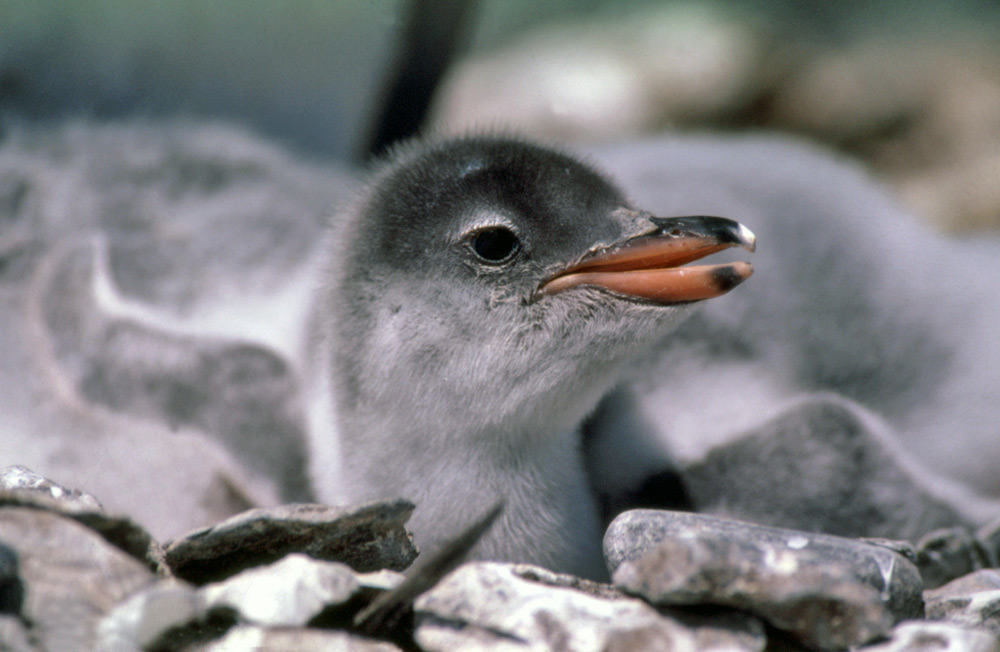
1. Ingestion is the act of taking in food, and it is the first stage in the processing of food. Ingestion, the act of eating, is only the first stage of food processing.
· Food is “packaged” in bulk form and contains very complex arrays of molecules, including large polymers and various substances that may be difficult to process or even toxic.
2. Animals cannot use macromolecules like proteins, fats, and carbohydrates in the form of starch or other polysaccharides.
· First, polymers are too large to pass through membranes and enter the cells of the animal.
· Second, the macromolecules that make up an animal are not identical to those of its food.
i. In building their macromolecules, however, all organisms use common monomers.
ii. For example, soybeans, fruit flies, and humans all assemble their proteins from the same 20 amino acids.
3. Digestion is the second stage of the processing of food. It is the breakdown of food into small molecules capable of being absorbed by the cells of the body.
- Digestion cleaves fats into glycerol and fatty acids, catalyzed by enzymes, cleaves nucleic acids into nucleotides, polysaccharides into simple sugars.
- Digestion, the second stage of food processing, is the process of breaking food down into molecules small enough for the body to absorb.
- Digestion cleaves macromolecules into their component monomers, which the animal then uses to make its own molecules or as fuel for ATP production.
- Polysaccharides and disaccharides are split into simple sugars.
- Fats are digested to glycerol and fatty acids.
- Proteins are broken down into amino acids.
- Nucleic acids are cleaved into nucleotides.
- Digestion reverses the process that a cell uses to link together monomers to form macromolecules.
- Rather than removing a molecule of water for each new covalent bond formed, digestion breaks bonds with the addition of water via enzymatic hydrolysis.
- A variety of hydrolytic enzymes catalyze the digestion of each of the classes of macromolecules found in food.
4. Enzymatic hydrolysis is the reaction by which macromolecules are broken up. It involves the addition of water. It obviously includes enzymes.
· Chemical digestion is usually preceded by mechanical fragmentation of the food—by chewing, for instance.
i. Breaking food into smaller pieces increases the surface area exposed to digestive juices containing hydrolytic enzymes.
5. Absorption is the stage in food processing when the body’s cells take up small molecules from the digestive tract. Cross the cell membrane with transport mechanisms.
· After the food is digested, the animal’s cells take up small molecules such as amino acids and simple sugars from the digestive compartment, a process called absorption.
6. Elimination occurs when the undigested material passes out of the digestive tract.
· During elimination, undigested material passes out of the digestive compartment.
7. Intracellular digestion occurs within a cell enclosed by a protective membrane. Sponges digest their food this way.
8. Extracellular digestion is carried out by most animals; in this type of digestion, food is broken down outside of cells.
· Many simple animals have a gastrovascular cavity, where digestion takes place. These simple animals have a single opening through which food enters and waste is eliminated.
More complex animals have complete digestive tracts (alimentary canals) which are one-way digestive tubes that begin with the mouth at one end of the terminate in the anus at the other.
Concept 41.4 Each organ of the mammalian digestive system has specialized food-processing functions
· The general principles of food processing are similar for a diversity of animals, including the mammalian system that we will use as a representative example.
· The mammalian digestive system consists of the alimentary canal and various accessory glands that secrete digestive juices into the canal through ducts.
o Peristalsis, rhythmic waves of contraction by smooth muscles in the walls of the canal, pushes food along.
o Sphincters, muscular ring-like valves, regulate the passage of material between specialized chambers of the canal.
o The accessory glands include the salivary glands, the pancreas, the liver, and the gallbladder.
· After chewing and swallowing, it takes 5 to 10 seconds for food to pass down the esophagus to the stomach, where it spends 2 to 6 hours being partially digested.
· Final digestion and nutrient absorption occur in the small intestine over a period of 5 to 6 hours.
· In 12 to 24 hours, any undigested material passes through the large intestine, and feces are expelled through the anus.
The oral cavity, pharynx, and esophagus initiate food processing.
Digestion occurs in specialized compartments.
To avoid digesting their own cells and tissues, most organisms conduct digestion in specialized compartments.
· The simplest digestive compartments are food vacuoles, organelles in which hydrolytic enzymes break down food without digesting the cell’s own cytoplasm, a process termed intracellular digestion.
· This process begins after a cell has engulfed food by phagocytosis or pinocytosis.
· Newly formed food vacuoles fuse with lysosomes, which are organelles containing hydrolytic enzymes.
· These tubes are called complete digestive tracts or alimentary canals.
o Because food moves in one direction, the tube can be organized into specialized regions that carry out digestion and nutrient absorption in a stepwise fashion.
Step by Step of the Human Digestive System
When food is in the mouth, or oral cavity, a nervous reflex occur which causes saliva to be secreted into the mouth. Saliva lubricates the food and contains the enzyme salivary amylase, which hydrolyzes starch and glycogen into smaller polysaccharides and the disaccharide maltose. This is typically the first type of macromolecules to be enzymatically attacked.
**Know what type of digestion (chemical, etc.) is occurring. Know also where the polysaccharide/monosaccharide is being digested and what is happening**
During chewing, food is shaped into a ball called a bolus. After being swallowed, the bolus enters the pharynx – a junction that opens to the esophagus and the trachea. During swallowing, the epiglottis (a flap made of cartilage) moves to the cover the trachea. This will divert the food to go down the esophagus (also called the alimentary canal).
The esophagus moves food from the pharynx down to the stomach through peristalsis – rhythmic waves of contraction by smooth muscle in the walls of the esophagus (also called the alimentary canal).
The stomach is in the upper abdominal cavity, and its functions include storing food and secreting gastric juice. Gastric juice contains hydrochloric acid, which is very acidic (pH of about 2). Gastric juice breaks down the extra cellular matrix of meat and plant materials, and it also kills most of the bacteria ingested with the food.
Gastrin is a hormone produced by the epithelial lining of the stomach.
Pepsin is an enzyme in gastric juice that begins to hydrolyze proteins into smaller polypeptides. Pepsin is secreted in an inactive form called pepsinogen, which is activated by the hydrochloric acid in the stomach.
The result of digestion in the stomach is a substance called acid chyme. The acid chime is shunted from the end of the stomach into the beginning of the small intestine via the pyloric sphincter.
____________________________________________________________________________________
Review Questions:
1. Which of the following organs is incorrectly paired with its function?
a. stomach - protein digestion
b. oral cavity - starch digestion
c. large intestine - bile production
d. small intestine - nutrient absorption
e. pancreas - enzyme production
a. peristalsis
b.
a. organic
b. mechanical
____________________________________________________________________________________






